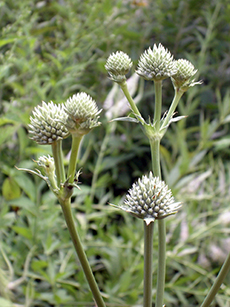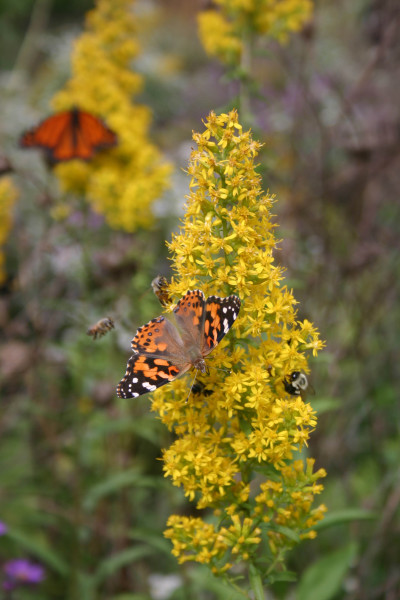Tallgrass Prairie Restoration

At LREC, we have been restoring tallgrass prairie since 1989, and have restored approximately 12 acres. The prairie habitats that existed in the Deer Creek watershed prior to European settlement were mainly wet-mesic tallgrass prairie, which commonly occur on flood plains of small streams such as Deer Creek. This type of prairie is characterized by poor drainage with surface water present following heavy rains, and is a system that is maintained by fire.
Characteristic plants of our target ecosystem include: big bluestem, prairie cord grass, switch grass, sawtooth sunflower, prairie blazing star, false dragonhead, foxglove beard-tongue, rattlesnake master, sedges, rushes, Virginia wild rye, Eastern gama grass, sneezeweed, common cinquefoil, dwarf St. John’s wort, and showy bluestar. If you know your plants well, you can find almost all of these characteristic species at LREC now.
How did these species get here? A 6-acre area and a 4-acre area (now known as the North Prairie and South Prairie) were sown with prairie seed in 1990, following a season in which the former crop fields were plowed and planted in a cover crop. In 1999, an additional 1.5-acre area, the Pasture Prairie (near the educational buildings of LREC), was sown with native prairie seed. Over the past 10 years, the Pasture Prairie has been expanded in stages and now covers about two acres.

We continue to manage these prairie areas to discourage the growth of trees, shrubs, aggressive native species, and invasive plant species. We continually add new species using seed and transplants (see Invasive Species and Seeds and Propagation for more details). We currently have approximately 216 plant species in the prairie, of which 179 are native to Missouri. We have also recorded:
- 98 species of birds in the prairie and woodland at LREC
- 18 species of mammals
- 10 species of amphibians
- 23 species of reptiles
- 105 species of bees, and
- 26 species of butterflies
See our site inventories in our Research Studies for detailed species lists.